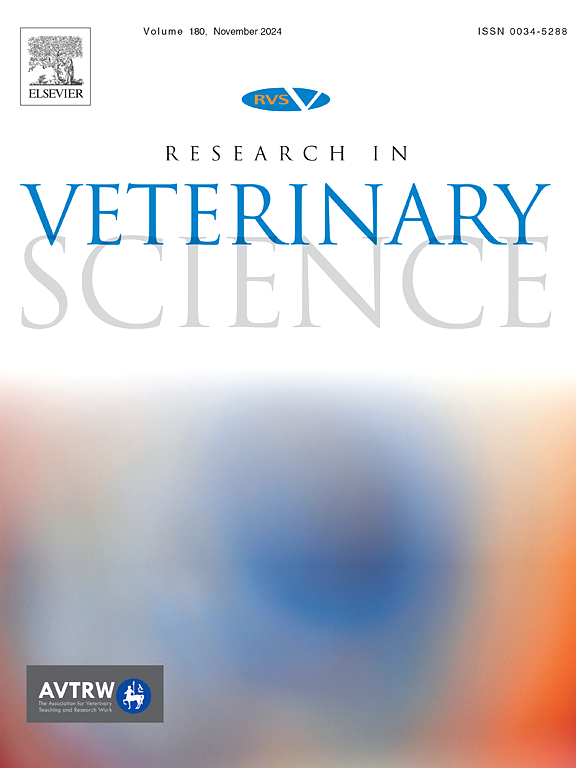Streptococcus suis serotypes 2, 1/2, 1, and 14 isolated from the brain of pigs dead with neurological symptoms or sudden death in Italian farms.
IF 2.2
3区 农林科学
Q1 VETERINARY SCIENCES
引用次数: 0
Abstract
The Streptococcus suis serotypes 2, and 14 are zoonotic pathogens in swine and present a capsular polysaccharide structure closely related to serotypes 1 and 1/2. Most molecular methods applied in veterinary diagnostic laboratories do not detect the single nucleotide polymorphism (SNP) that differentiates the serotypes 2 from 1/2, and 1 from 14. Consequently, epidemiological data is lacking. A collection of strains isolated between 2019 and 2024 from the brain of diseased pigs, and previously classified as 2–1/2 or 1–14, was analysed using three molecular methods able to detect of the SNP distinguishing the four serotypes. The study revealed that 57 % of those formerly classified as serotype 2–1/2 actually belong to serotype 1/2, while no serotype 14 was found among the strains classified as 1–14. The study also evaluates the feasibility of the routine application of these PCR-based methods for SNP detection, emphasizing the importance for accurate and rapid serotype identification to aid vaccine production and epidemiology.
猪链球菌血清型2、1/2、1和14从意大利农场因神经症状或猝死而死亡的猪脑中分离出来。
猪链球菌血清2型和14型是猪的人畜共患病原体,其荚膜多糖结构与血清1型和1/2型密切相关。兽医诊断实验室应用的大多数分子方法不能检测区分2型和1/2型、1型和14型的单核苷酸多态性(SNP)。因此,缺乏流行病学数据。使用三种能够检测区分四种血清型的SNP的分子方法分析了2019年至2024年间从病猪大脑中分离出的菌株,这些菌株以前被归类为2-1/2或1-14。研究发现,原来被分类为2-1/2型的菌株中有57%实际上属于1/2型,而在被分类为1-14型的菌株中没有发现14型。本研究还评估了常规应用这些基于pcr的SNP检测方法的可行性,强调了准确、快速的血清型鉴定对疫苗生产和流行病学的重要性。
本文章由计算机程序翻译,如有差异,请以英文原文为准。
求助全文
约1分钟内获得全文
求助全文
来源期刊

Research in veterinary science
农林科学-兽医学
CiteScore
4.40
自引率
4.20%
发文量
312
审稿时长
75 days
期刊介绍:
Research in Veterinary Science is an International multi-disciplinary journal publishing original articles, reviews and short communications of a high scientific and ethical standard in all aspects of veterinary and biomedical research.
The primary aim of the journal is to inform veterinary and biomedical scientists of significant advances in veterinary and related research through prompt publication and dissemination. Secondly, the journal aims to provide a general multi-disciplinary forum for discussion and debate of news and issues concerning veterinary science. Thirdly, to promote the dissemination of knowledge to a broader range of professions, globally.
High quality papers on all species of animals are considered, particularly those considered to be of high scientific importance and originality, and with interdisciplinary interest. The journal encourages papers providing results that have clear implications for understanding disease pathogenesis and for the development of control measures or treatments, as well as those dealing with a comparative biomedical approach, which represents a substantial improvement to animal and human health.
Studies without a robust scientific hypothesis or that are preliminary, or of weak originality, as well as negative results, are not appropriate for the journal. Furthermore, observational approaches, case studies or field reports lacking an advancement in general knowledge do not fall within the scope of the journal.
 求助内容:
求助内容: 应助结果提醒方式:
应助结果提醒方式:


